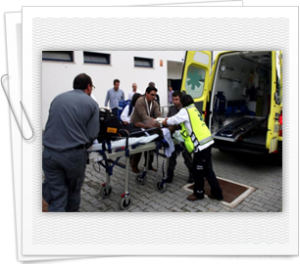Online CPR Certification Blog
How to reduce the risk of cardiac arrest among children
Date: May 9th, 2014
 Lay person cardiopulmonary resuscitation refers to an emergency procedure given by someone with no health care expertise to a child aged at least one year old. Children may need CPR as a result of stopping of the heart or when they are no longer able to breathe. This mostly happen when the child is involved in an accident, suffers a severe injury or has an existing medical condition. When you realize that a child is in such a condition, it is essential that you perform lay person CPR until professional health care becomes available.
Lay person cardiopulmonary resuscitation refers to an emergency procedure given by someone with no health care expertise to a child aged at least one year old. Children may need CPR as a result of stopping of the heart or when they are no longer able to breathe. This mostly happen when the child is involved in an accident, suffers a severe injury or has an existing medical condition. When you realize that a child is in such a condition, it is essential that you perform lay person CPR until professional health care becomes available.
Child CPR instructions to follow
Before you start off with this emergency procedure, it is always advisable that you can 911 ask for medical caregivers to come and attend to the child. Secondly, it is essential that you ensure that the child is in a danger free zone and move him if necessary. If the child can’t breathe, start performing CPR on him or her. It is essential that you remember the CAB method of giving CPR and follow it accordingly. If there is an AED nearby, make sure that you use it as a substitute to the traditional way of giving CPR. Make sure that you use your knowledge of using an AED and follow it to the letter.
How to prevent cardiac arrest and respiratory problems in children
- Airway obstruction by a foreign body: Make sure that you remove small objects from a child’s reach. Children are fond of putting small objects in their mouths like coins, batteries, buttons, marbles, small toys, toy parts and balloons. Besides this, food can be a cause of obstruction of airway such as grapes, hot dogs, hard candy, popcorn and nuts.
- Strangulation: ensure that extension cords and drapery are not within a child’s reach. Avoid putting any kind of string or cord around the neck of a child. Some of the strings and cards that pose great danger to a child are those with jewelry or pacifiers attachments.
- Suffocation: Check that no plastic bags are available within the reach of a child. Most children are fond of putting plastic bags on their heads which can end up making them unable to breathe and suffocating them.
- Drowning: don’t make the mistake of your child near or in water unattended including a bathtub, pail of water or a pool.
- Falls: a child should never be left unattended on a high surface like on a changing table. Make sure that you use toddler gates while on the stairs and stay near him when climbing.
- Car safety: while driving, ensure that your child is secured completely in the safety seat and don’t leave alone in the car. Avoid driving after drinking or taking medicines which make you sleepy.
Children are also exposed to other risks that can make them stop breathing such as falls, gun injuries, poisoning and others. It is always important that you ensure your child is living in a safe environment to minimize such risks.
